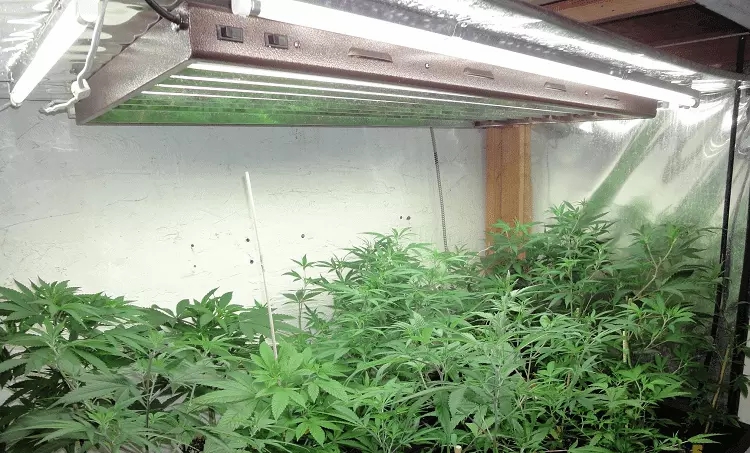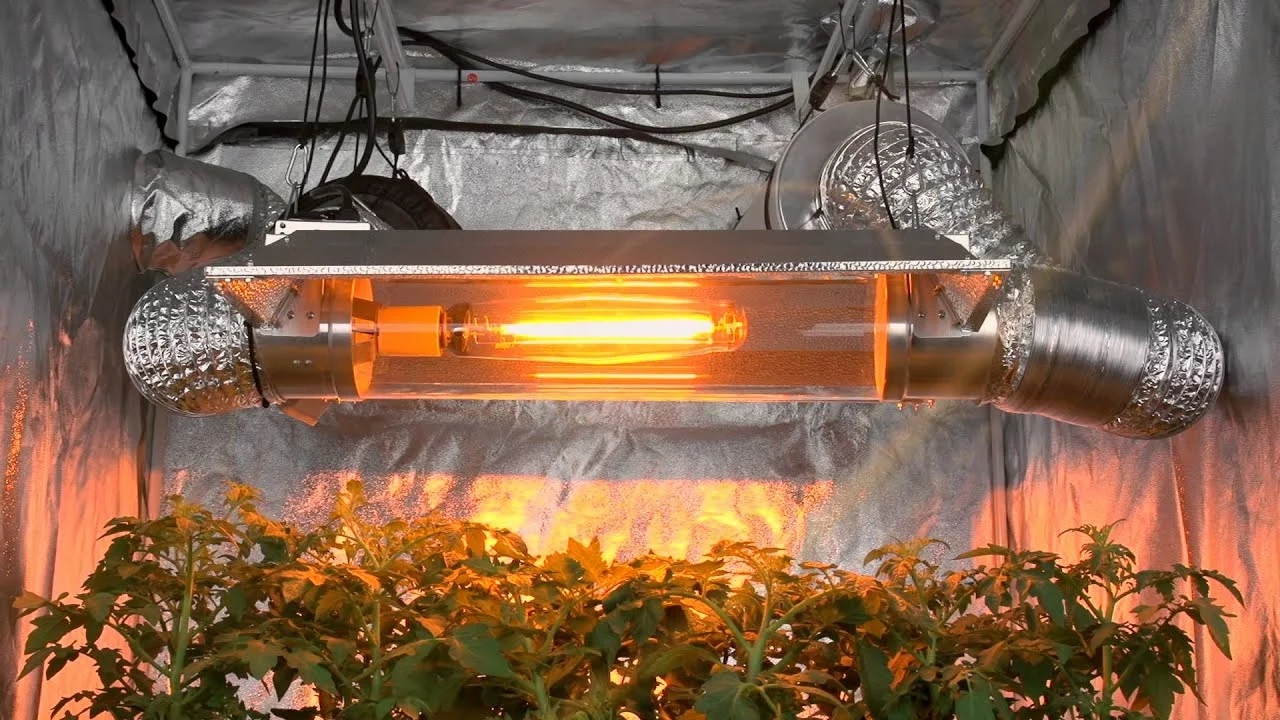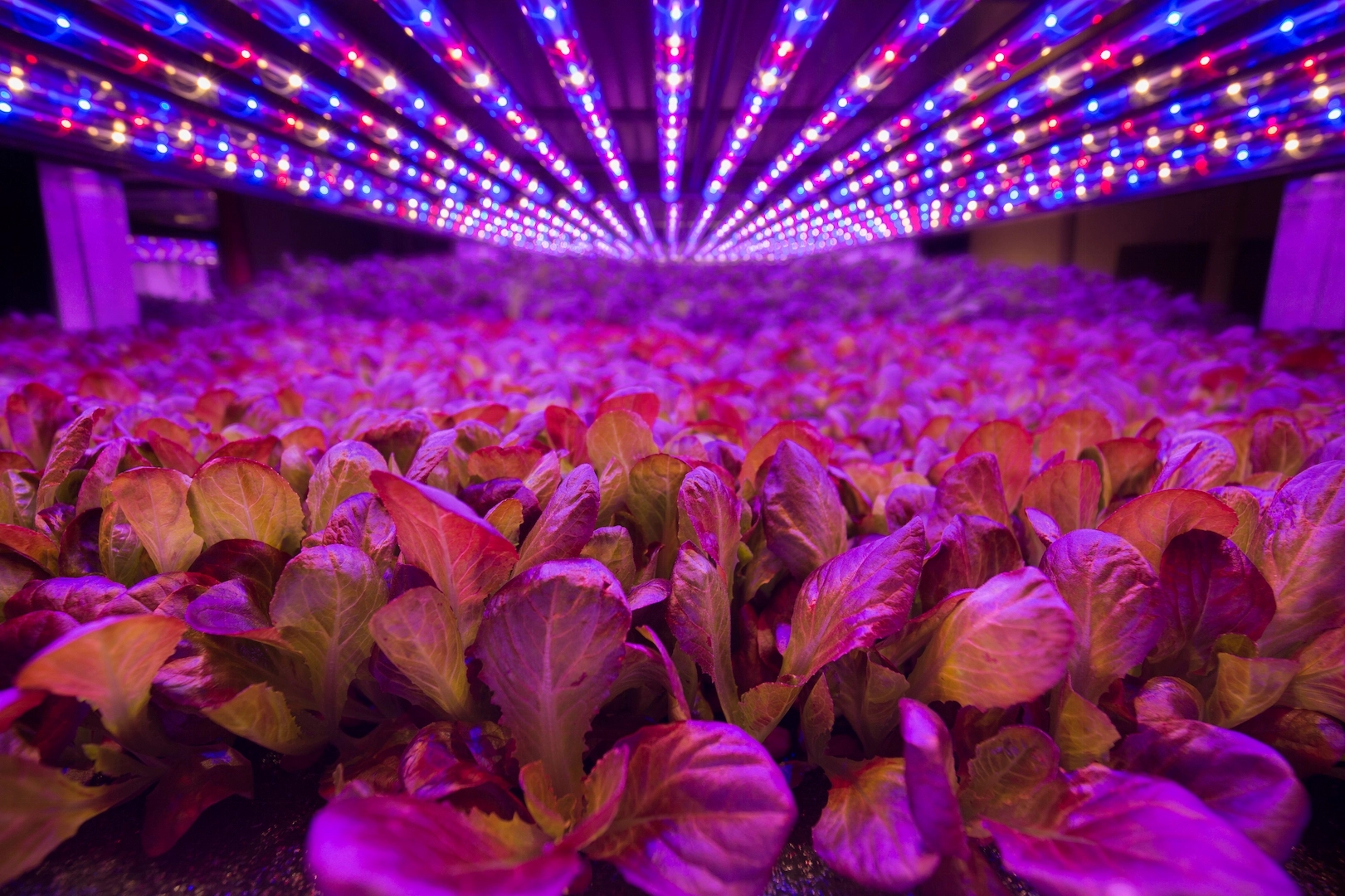Sometimes, due to changes in the weather, vertical or indoor farming may be practical and beneficial, especially to control conditions related to temperature, light and humidity. Vertical or indoor farming is increasingly regarded as the future of modern farming, and slowly some companies are beginning to expand their existing facilities and build new ones.
The availability of affordable, cutting-edge lighting technology is critical to creating indoor agricultural environments suitable for small and large farms. In fact, there are many types of growth lamps. The decreasing cost of the ever-growing LED lights will benefit the industry's future. It can reduce the cost of growing food indoors. To understand why LED lights are preferable to other available growth lights, let's take a closer look.
What is grow light?
In the simplest definition, growth light is an artificial light source, usually an electric light source, designed to stimulate the growth of plants by emitting an electromagnetic spectrum of photosynthesis. These lamps are commonly used in applications that lack natural light or require additional light.
For example, suppose that in winter, since the hours of available light may be insufficient, a growth lamp may be used to provide additional light for plant growth. It also helps to grow vegetables and fruits indoors.
Especially when someone wants to grow food in an environment with insufficient light or a small space, using a growth lamp can provide sufficient illumination.
Today, large-scale indoor agriculture uses lights to completely replace direct sunlight. However, ever-increasing lighting does not always need to accurately mimic sunlight. In many applications, they can beat sunlight.
Types of growth lamps
There are three types of growth lamps that can be used for indoor urban agriculture: fluorescent growth lamps, HPS or HID growth lamps, and LED growth lamps.
1.Fluorescent lamp: Fluorescent lamp is used to grow herbs and vegetables indoors. There are two types, including fluorescent tubes and compact fluorescent lamps (CFL). Fluorescent tubes have many different intensities. Long and energy efficient. Fluorescent lamps are very thin and can be easily inserted into tight spaces. But these lamps also have disadvantages. They require ballasts to regulate the current, and the lamps need support instead of traditional sockets. Such requirements may increase
At the same time, energy-saving lamps have become more and more common in home use, while indoor and indoor agriculture. Separate fluorescent lamps consume only 20% to 30% of the energy consumed by traditional incandescent lamps, and their replacement is six to eight times that of traditional incandescent lamps.
A significant advantage of compact fluorescent lamps is that they do not emit excessive transfer to plants, allowing farmers to keep the lamps close to the plants. This low heat characteristic achieves very energy saving. They are also practical and achieve cost reduction.

2. HPS growth lamps: High-pressure sodium lamps (HPS) are becoming more and more popular, and have surpassed fluorescent tubes and bulbs. These lights are more common among commercial and experienced indoor growers, and the technology behind them has been established for 75 years.
The problem with HPS is that it generates a lot of transients. Therefore, you should keep the lighting away from plants. They need a lot of investment for installation and maintenance.
Therefore, HPS is not recommended for small manufacturers.

3. LED plant growth lamp: Although the origin of LED technology began in the early 1900s, red and blue LEDs suitable for indoor agriculture were used before the 2000s.
These light sources can be placed far away from the plants while generating enough light without consuming a lot of energy. The efficiency of energy-saving lamps is almost 50% lower than that of LED lamps. The trace amount produced by the lamp is almost zero. Most importantly, LEDs can best create a perfect indoor environment to produce almost all types of food.
But the cost of LED bulbs is higher than the other two types. And, workers working on indoor farms should use eye protection because LEDs can be harmful to human eyes.

The best adjustment determines the type of agriculture or farmer
If you are a beginner in indoor planting, CFL is the best choice. It can widely use various wavelengths. The fixtures of these lamps are smaller than LED lamps and are compatible with CFL at all stages of factory development. The best is also in the interests of small farmers.
However, if you want to grow food on a large scale, LEDs may be a long-term investment because they are the most energy-efficient. In many ways, LED plant growth lights are much better than plant daylight.
The role of LED in vertical agriculture
Advances in LED technology have created an ideal environment for vegetable cultivation, shortening the cultivation cycle, and increasing yield. In fact, LED has gradually become the de facto light source, which can create the most favorable controlled environment for indoor agriculture. Although controlling temperature and water is critical to have a perfect environment, lighting is by far the most important factor. Advances in LED technology have made vegetables grown indoors very energy-efficient.
Although most indoor farms today use LEDs, many farms have not fully converted to LEDs due to the high price. However, the gradual decline in the price of LEDs should help farmers convert to LEDs because it can save a lot of energy. Advances in technology and the lower cost of conversion to LEDs should make the vertical agricultural economy more attractive in the future.
What farmers need to know about LED lights
LEDs are more expensive than HID lamps, but LEDs are always on hand and may prove to be the best long-term solution. In fact, the use of LEDs can reduce a large number of expectations by 70%. LEDs can last at least 10 years.
You can keep the lights 3-4 feet from the canopy and provide the necessary lighting to maximize the growth of crops. Don't misunderstand the misconception that the LED should be placed near the plant.
For your indoor farm, this may be a "failure decision". Therefore, it is strongly recommended that you spend enough time planning and designing the layout of plants and lights. It is strongly recommended to use CAD (Computer-Aided Design). The design should be optimized to avoid wasting light while providing sufficient light for the plants.
When the white surface reflects light, make sure you have a white surface that resets a lot. Any light-colored surface that reflects light will work in the same way. , You can use lighting to distribute light over a wider area.
Finally, please keep up to date with the latest indoor farming technology and seek the best solution to improve the construction and profitability of the farm. Use a systematic approach while paying attention to new technological opportunities.























